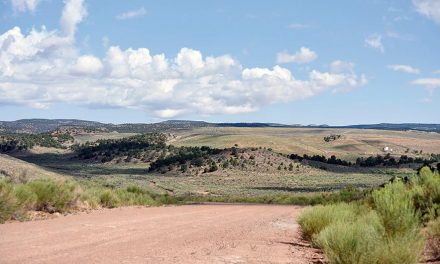
50 Years Ago: Navajo rejects idea of per-capita payments
It’s a question that seems to come up every few years – why doesn’t the Navajo Nation share some of its wealth with its members like other tribes do?
The Navajo Times first addressed this situation back in 1965 when it printed a front page article stating that the Interior Department had recently approved giving members of the Klamath Tribe per capital payments after Congress gave the tribe $2.5 millions for lands ceded to the United States some 100 years before.
This resulted in each of the members of the tribe receiving a check for $1,172.05, according to the Times.
This led to a lot of letters to the editor from Navajos who wondered why the Navajos didn’t do the same thing when they got a big judgment or a lot of money.
After all a thousand dollars back in 1965 probably helped a lot of the members of the Klamath Indians and a slice of the more recent $554 million to the Navajos would help a lot of Navajo families during these trying times.
As the Navajo Times pointed out – more than once it seems – all Indian tribes are not created equal.
In this case, Interior officials said that they decided to allow payments to go to individual members of the tribe because there was no formal Klamath tribal government.
“Federal trust responsibilities for their reservation – the Klamatha Reservation in southern Oregon – was terminated by a 1954 act of Congress,” the Times stated.
The Times also pointed out something that should have been even more obvious – even back in 1965, there were a lot of Navajos, probably somewhere between 120,000 and 125,000.
There were only 2,133 names on the Klamath roll so a division of the money provided each member a decent amount of money.
Dividing that by 125,000 Navajos would have been each tribal member would have received about $10, not exactly a life changing amount by anyone’s reckoning.
This has been, over the years, the key reason the Navajo government has rejected the idea of per capita payments – there are too many tribal members and the money would better be used in providing services or even put away in the bank where it could earn interest (such as the permanent trust fund and the veteran’s trust fund).
This whole issue came up again about nine years ago when the Navajo Nation first started talking seriously about developing casinos in and around the reservation.
Back in 2006, when the Times did an article about the whole issue, 73 tribes had gaming operations and many of those tribes shred the profits from their casino operations with their tribal members.
The Comanches of Oklahoma gave each of its members about $900 a year while a member of the Santa Ynez Band of Chumash Indians in California got a whopping $30,000 a month.
That’s $360,000 a year.
But, as the article pointed out, the larger the tribe, the smaller the per capita payments which is why members of the Puyallup Tribe of Tacoma, Washington in 2006 only received $2,000 a month but still $24,000 a year was nothing to sneeze at, especially when you look at another provision of the tribal gaming compact – any tribal member was also guaranteed a job in the casino if they wanted it.
With casino revenue declining for most tribes because of the downturn in the economy, per capita payments have also shrunk in recent years and nowadays, tribes usually opt to use profits from their gaming operations y providing services to their tribal members.
This whole question is bound to come up again when the Navajo Nation sets up a referendum for Navajo voters to decide how to use the money in the permanent trust fund, which will probably be more than $2 billion at that time, assuming there is no major recession.
But even at $2 billion, with more than 300,000 Navajos, a division of the fund through per capita payments would only get each tribal member about $6,000.
And remember, that sum is taxable.
Still, I remember there was a lot of debate some years ago about a proposal to help tribal members pay the funeral expenses of their loved ones.
As I remember the proposal, the tribe would pay a huge sum – maybe a million dollars a year – for a number of years as an insurance policy that would provide $10,000 in benefits to a family when a loved one dies.
Eventually, over a number for years, the tribe would be so invested in the program that it would no longer have to pay a premium and the $10,000 payment would go on forever.
Or at least that is how it was proposed.
There were some in the tribe who liked the idea but eventually, the whole matter was rejected.
To read the full article, pick up your copy of the Navajo Times at your nearest newsstand Thursday mornings!
Are you a digital subscriber? Read the most recent three weeks of stories by logging in to your online account.







 Highway 264,
Highway 264, I-40, WB @ Winslow
I-40, WB @ Winslow